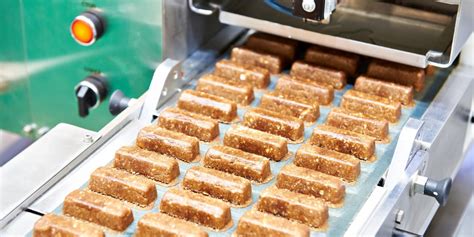The Complete Guide to Food and Beverage OEE: Optimizing Your Production Line
Optimizing your food and beverage production line is crucial for maximizing profits and minimizing waste. One of the most effective tools for achieving this is Overall Equipment Effectiveness (OEE). This comprehensive guide delves into the intricacies of OEE in the food and beverage industry, providing you with actionable strategies to boost your efficiency.
What is OEE?
OEE is a key performance indicator (KPI) that measures the effectiveness of your equipment in producing good quality products. It combines three crucial elements:
-
Availability: This measures the percentage of time your equipment is available for production, factoring in planned and unplanned downtime. Minimizing downtime due to maintenance, breakdowns, or material shortages is vital.
-
Performance: This looks at the speed and efficiency of your equipment compared to its designed capacity. Are you operating at peak speed, or are there bottlenecks slowing down the line?
-
Quality: This assesses the percentage of good products produced compared to the total output. This includes reducing defects, rework, and waste.
The OEE formula is simple: OEE = Availability x Performance x Quality
A perfect OEE score is 100%, though realistically, most food and beverage companies aim for significant improvements over their current levels.
Calculating OEE in Food and Beverage: A Practical Example
Let's say you have a bottling line that runs for 8 hours a day. Here's a hypothetical example of calculating OEE:
- Available Time: 8 hours/day * 60 minutes/hour = 480 minutes
- Downtime: 30 minutes (planned maintenance) + 15 minutes (unplanned breakdown) = 45 minutes
- Available Time (Adjusted): 480 minutes - 45 minutes = 435 minutes
- Ideal Cycle Time: 1 bottle/minute
- Actual Bottles Produced: 390 bottles
- Performance Rate: 390 bottles/435 minutes = 0.897 (or 89.7%)
- Defective Bottles: 10 bottles
- Quality Rate: (390 bottles - 10 bottles) / 390 bottles = 0.974 (or 97.4%)
- OEE: 0.974 (Quality) * 0.897 (Performance) * (435 minutes/480 minutes) (Availability) = 72%
This example highlights areas for improvement.
Key Strategies for Improving Food and Beverage OEE
Improving your OEE requires a multifaceted approach. Here are some key strategies:
1. Preventative Maintenance: Implement a robust preventative maintenance program to reduce unplanned downtime. This includes regular inspections, cleaning, and lubrication.
2. Root Cause Analysis (RCA): When breakdowns occur, utilize RCA to identify the underlying cause and prevent recurrence.
3. Process Optimization: Analyze your production line for bottlenecks and areas for improvement in speed and efficiency. Lean methodologies are invaluable here.
4. Quality Control Measures: Implement strict quality control procedures at each stage of the production process to minimize defects. This includes regular testing and inspections.
5. Employee Training: Ensure your employees are well-trained in operating the equipment and following safety and quality procedures.
6. Data-Driven Decision Making: Use OEE data to identify areas for improvement and track progress. Implementing OEE tracking software or a digital twin of your line can provide valuable insights.
7. Automation and Technology: Consider automating certain tasks to improve efficiency and reduce human error.
Conclusion: Reap the Rewards of Higher OEE
Improving your Food and Beverage OEE is not just about increasing production; it’s about reducing waste, improving product quality, and ultimately boosting your profitability. By focusing on preventative maintenance, process optimization, and data-driven decisions, you can significantly improve your OEE and gain a competitive edge. Remember that continuous monitoring and improvement are vital for sustained success.
